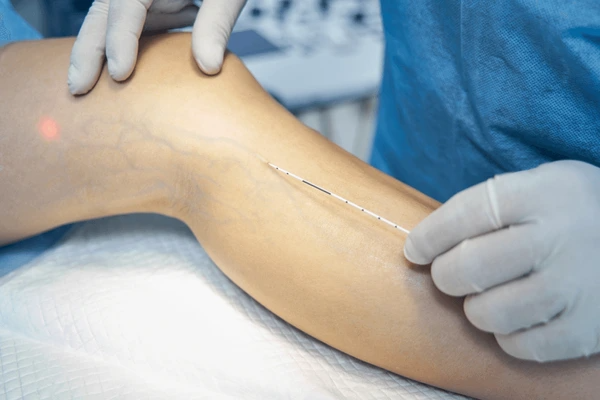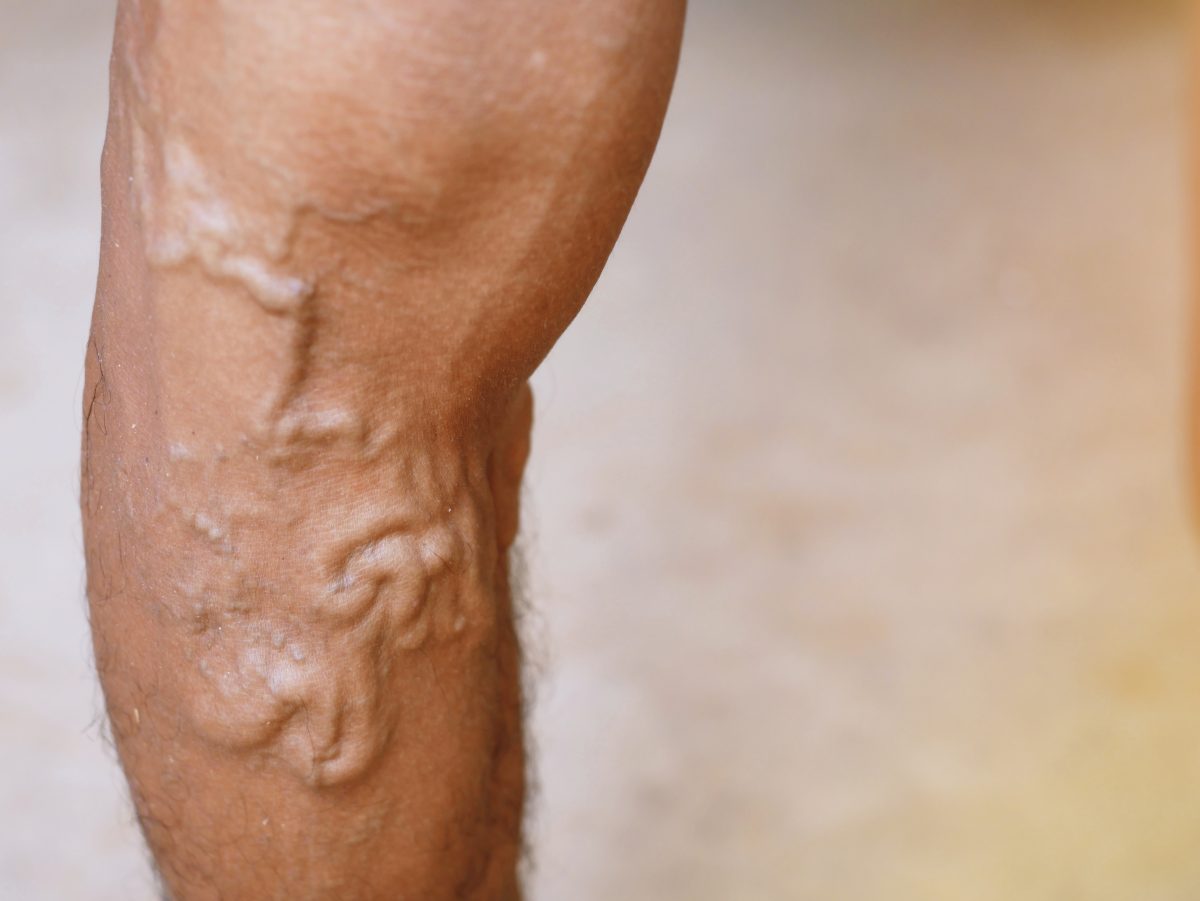Varicose veins affect millions of individuals globally. These prominent, twisted veins can easily be seen, and they appear blue or dark purple. That is extremely painful and sometimes can also lead to self-consciousness and embarrassment. Though most view this as a superficial issue, varicose veins indicate underlying health conditions. With several modern treatments available, varicose veins are treatable with conservative to advanced surgical interventions.
Let’s check out the different treatments available for varicose veins in this blog.
Varicose veins are more than a cosmetic problem; they also represent a commonly misinterpreted and frequently misunderstood medical condition found in millions of people worldwide. Swollen, twisted veins usually appear in the legs and feet and cause all kinds of bothersome symptoms, from aching and heaviness to swelling.
For many, varicose veins are marks or blemishes on the skin. This, however, is not something that can be taken lightly since it marks poor circulation and chronic venous insufficiency; it implies that veins cannot efficiently return blood to the heart.
Increasing age is a significant risk for varicose veins, and it is directly due to some factors like obesity, genes, and long periods of standing or sitting. Changes in hormones also cause it.
Luckily, with continuous breakthroughs in medical technology, various treatments suit every person’s preferences and needs.
This holistic guide will look into the broad range of treatment options available for varicose veins today, from simple lifestyle modifications and minimally invasive interventions to more conventional surgical interventions. Whether it is the physical relief from the discomfort caused or improving aesthetic appearance, this blog aims to give valuable information regarding the approach toward the management of varicose veins.
Understanding Varicose Veins
Surgery and other varicose vein treatments must first be understood with the condition. This occurs when the valves in the veins fail to perform their task, where pooling of blood is the result instead of blood returning to the heart through efficient flow.
Symptoms of Varicose Veins
- Swollen ankles and legs
- Tension in the legs due to excess weight
- Itchiness or burning near the area affected by the presence of veins
- Discolouration of the skin around areas of the veins.
- Regular Physical Activity
Promotes leg blood flow and tones up muscles around veins. It minimizes the risk of developing varicose veins and eases present symptoms.
- Weight Control
Maintaining a normal weight prevents undue stress on the veins. A higher body weight can worsen cases of varicose veins and add more complications to the disease.
- Leg Lifting
Lifting legs frequently minimizes swelling and discomfort. This technique effectively reduces pressure from varicose veins and promotes better blood circulation in the body.
- Compression Stockings
Graduated compression stockings improve blood flow and reduce pain. They apply gentle pressure on the legs to support optimal venous function.
- Sclerotherapy
In this procedure, a sclerosant solution is injected directly into the affected veins, causing them to collapse and fade, making this a minimally invasive process.
Advantages:
- Very effective for small and spider veins
- No anaesthesia is required
- Short recovery time
Disadvantages:
- Often requires multiple treatment sessions
- Mild bruising at injection sites is possible.
- Endovenous laser ablation (EVLA).
A minimally invasive surgery, sealing varicose veins by laser light from a tiny skin incision.
Main Considerations:
Potential for bruising and swelling after the treatment
Multiple follow-up monitoring visits
- Radiofrequency ablation (RFA).
This is another option instead of EVLA that uses radiofrequency energy to heat and close the problem vein.
Advantages:
- Accessible in larger diameter veins
- Minimally invasive
- Short recovery time
Limitations:
Potential bruising and swelling post-treatment
Multiple follow-up visits with the health provider are needed to ensure proper healing.
Advanced Treatments:
- Ambulatory phlebectomy
It involves removing varicose veins using tiny skin incisions.
Advantages: It provides direct removal with immediate results; there is minimal scar; it is best used for larger surface areas.
Disadvantages: There is the use of local anaesthesia; it has the possibility of bruising and swelling.
- VenaSeal (Glue Ablation):
What it is: An adhesive is injected into the vein to seal it.
Advantages: Non-heat treatment, so not too painful; quick; immediate result
Disadvantages: More expensive compared to other treatments; sometimes may cause an allergic reaction in patients.
- Endoscopic Perforator Ligation
What it is: It is the closure of involved veins using a camera inserted into very small openings within the skin.
Benefits: suitable for extreme cases; fewer complications than other conventional surgery treatments.
Drawbacks: a general anaesthetic is applied; longer duration for the recovery period.
- Varithena
What is it: It is a foam-based sclerosant that is directly injected into the veins and causes closure by collapsing varicose veins.
Benefits: Applicable on large and smaller-sized veins, least invasive type with a rapid recovery period.
Cons: May require multiple sessions to get the best results; temporary side effects such as swelling may occur.
Surgical Options:
If other varicose vein treatments have failed to show improvement and the condition is severe, surgical interventions may be an option to seek a complete remedy.
- Vein Stripping and Ligation:
The main idea of this old-fashioned surgery is to tie down the affected vein and take it out of the leg. Such treatment may seem effective but, of course, requires general anaesthesia and has a more protracted recovery period.
- Combination Therapy:
At times, combination therapy with surgical techniques and other treatments, such as sclerotherapy, is considered for the best results.
Choosing the right treatment centre:
When considering treatment for varicose veins, it is critical to select an experienced healthcare physician or vein facility. It would be useful to have some tips on how to find a wonderful companion.
- Select a specialised vein centre with qualified physicians who have a history of managing venous disorders.
- Patient testimonials and reviews can be observed to learn about the kind of care being rendered at the centre.
- Get a second opinion from another doctor to consider your alternatives and decide which one is best for you.
Beverly Hills and other adjacent areas have the country’s best varicose vein treatment centres.
The medical facilities have been equipped with innovative technology and highly skilled staff members are dedicated to providing specialised care that suits your needs.
Conclusion
Varicose veins can have a substantial impact on your quality of life, but there are numerous treatment choices, ranging from conservative methods to advanced surgical interventions. Whether you’re looking for cosmetic enhancement or pain relief, learning about the options accessible at a reputed varicose vein centre can assist you in making the best health decisions. Don’t let varicose veins keep you from enjoying life.










